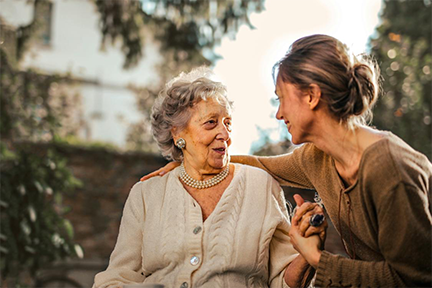
As individuals age, the risk of developing cancer becomes increasingly significant, with advancing age emerging as the primary risk factor for various cancer types.
According to the National Institutes of Health (NIH), the incidence rates for cancer steadily escalate with age. This underscores the critical need for specialized and compassionate care for older adults facing a cancer diagnosis.
It starts at 25 cases per 100,000 individuals in age groups under 20 and increases to approximately 350 cases per 100,000 among those aged 45–49. The data surpasses 1,000 cases per 100,000 in age groups 60 years and older.
As the aging population continues to grow, the demand for palliative care tailored for older individuals with cancer becomes paramount. This article explores the imperative role of it in addressing the complex dimensions of cancer in older adults.
Why is Palliative Care Important for Older Adults with Cancer?
Cancer, a leading cause of mortality among older adults, ushers in a challenging period for patients and their families. In this difficult landscape, palliative care emerges as a vital component in enhancing the quality of life.
This form of care operates on multiple fronts. It alleviates physical symptoms like pain, fatigue, nausea, and vomiting, to skillfully manage the side effects of cancer treatments.
At a time when informed decisions about treatment become crucial, it facilitates conversations and provides the necessary information to make choices. Moreover, this care extends its compassionate reach to the planning of end-of-life care, acknowledging the importance of dignity and comfort in the final stages.
According to the American Cancer Society, palliative care is recommended as a standard part of cancer care. It is offered from the point of diagnosis through treatment and into the post-treatment phase.
The interdisciplinary approach of this care addresses the entirety of the patient's experience. It manages not only physical symptoms but also mental, emotional, social, and spiritual aspects.
What Does Palliative Care for Older Adults with Cancer Look Like?
The primary objective of palliative care is to deliver personalized support, recognizing the unique challenges posed by cancer in older adults. This specialized care is flexible in its delivery. It is offered in diverse settings such as hospitals, outpatient clinics, nursing homes, and even within the patient's home.
Palliative care endeavors to enhance the quality of life for older adults navigating the complexities of cancer and its treatment.
Improving Palliative Care for Older Adults with Cancer
Enhancing palliative care necessitates a multifaceted approach that addresses awareness, education, research, and accessibility. Firstly, there is a need to heighten awareness among healthcare professionals and patients about the benefits of it.
This involves dispelling misconceptions and emphasizing that palliative care is not solely an end-of-life measure but an integral support system throughout the cancer journey.
To fortify its foundation, there should be a concerted effort to develop comprehensive training and education programs for healthcare professionals. Specialized certifications, such as an Adult Gerontology ACNP post-master’s certificate, can play a pivotal role.
Rockhurst University notes that this certification equips healthcare providers with advanced knowledge and skills. It provides training specific to the care of older adults, including those with complex conditions like cancer. Strengthening such educational initiatives ensures that professionals are adept in delivering care that aligns with the needs of older patients.
Additionally, increased funding for palliative care research is paramount. This investment facilitates the exploration of innovative interventions, best practices, and outcomes in care for older adults with cancer.
Lastly, making care more accessible demands strategic efforts to integrate these services into mainstream healthcare. This will ensure that older adults have timely access to the comprehensive support palliative care offers.
Challenges of Providing Palliative Care for Older Adults
The medical needs of older adults are often intricate, requiring a potential interaction between cancer and other age-related health issues.
Effective communication becomes challenging, particularly with older adults experiencing cognitive impairment. This necessitates specialized approaches to ensure that their preferences and needs are understood and addressed.
Emphasizing emotional and spiritual support further complicates care dynamics, as the subjective nature of these needs requires culturally sensitive interventions. Financial considerations add a layer of complexity, as the costs associated with cancer care can be substantial.
According to Hospice News, state laws aimed at promoting palliative care have been introduced to address various aspects. They include payment, workforce development, public awareness, and quality standards. While some states have made strides in legislating for palliative care, financial constraints remain a pervasive challenge.
States like Georgia, Maryland, and Virginia have taken proactive measures, passing multiple bills to enhance palliative care infrastructure. Establishing advisory councils and awareness campaigns, as seen in New York, exemplifies efforts to bridge gaps in understanding and accessibility.
Despite progress, the challenges underscore the need for comprehensive and coordinated strategies to optimize palliative care for adults with cancer.
Final Thoughts
Palliative care emerges as a pivotal and indispensable component of cancer care for older adults. It offers a spectrum of benefits that extend far beyond mere medical management.
This form of patient care brings relief and has the potential to contribute to decreased healthcare costs through informed decision-making. Older adults are encouraged to initiate conversations with their healthcare providers about integrating it into their treatment plans.
